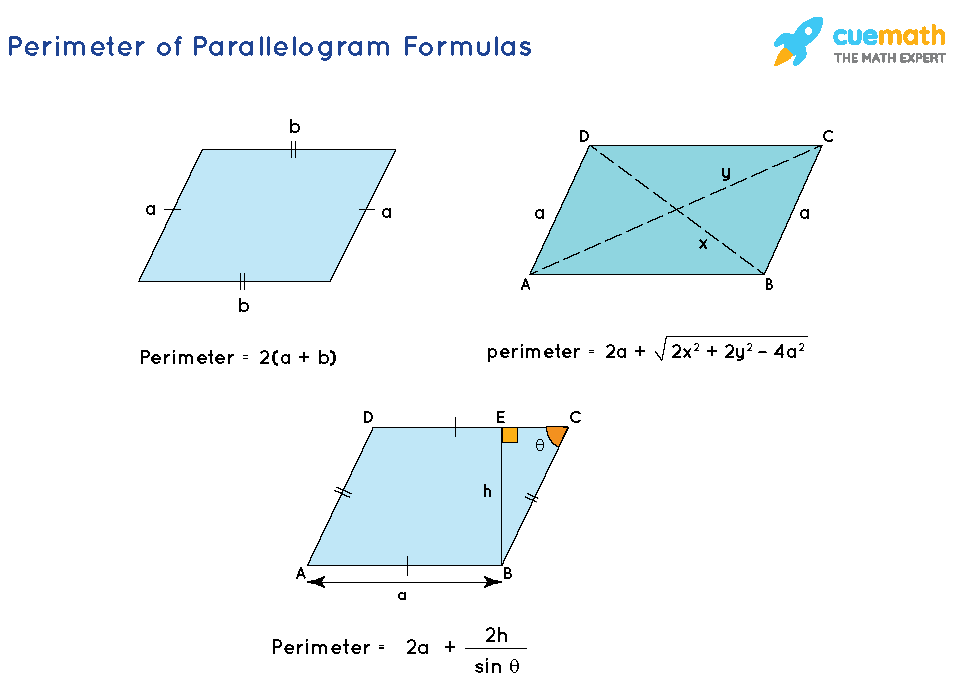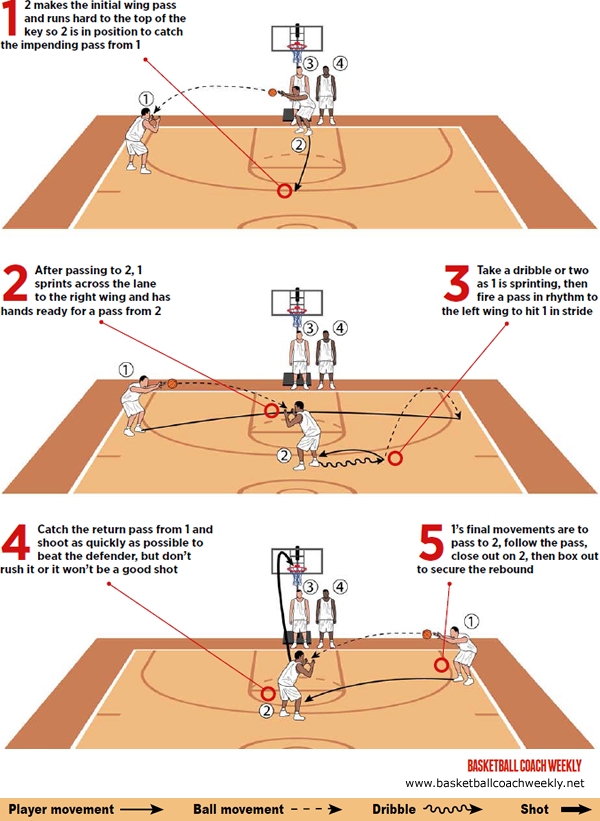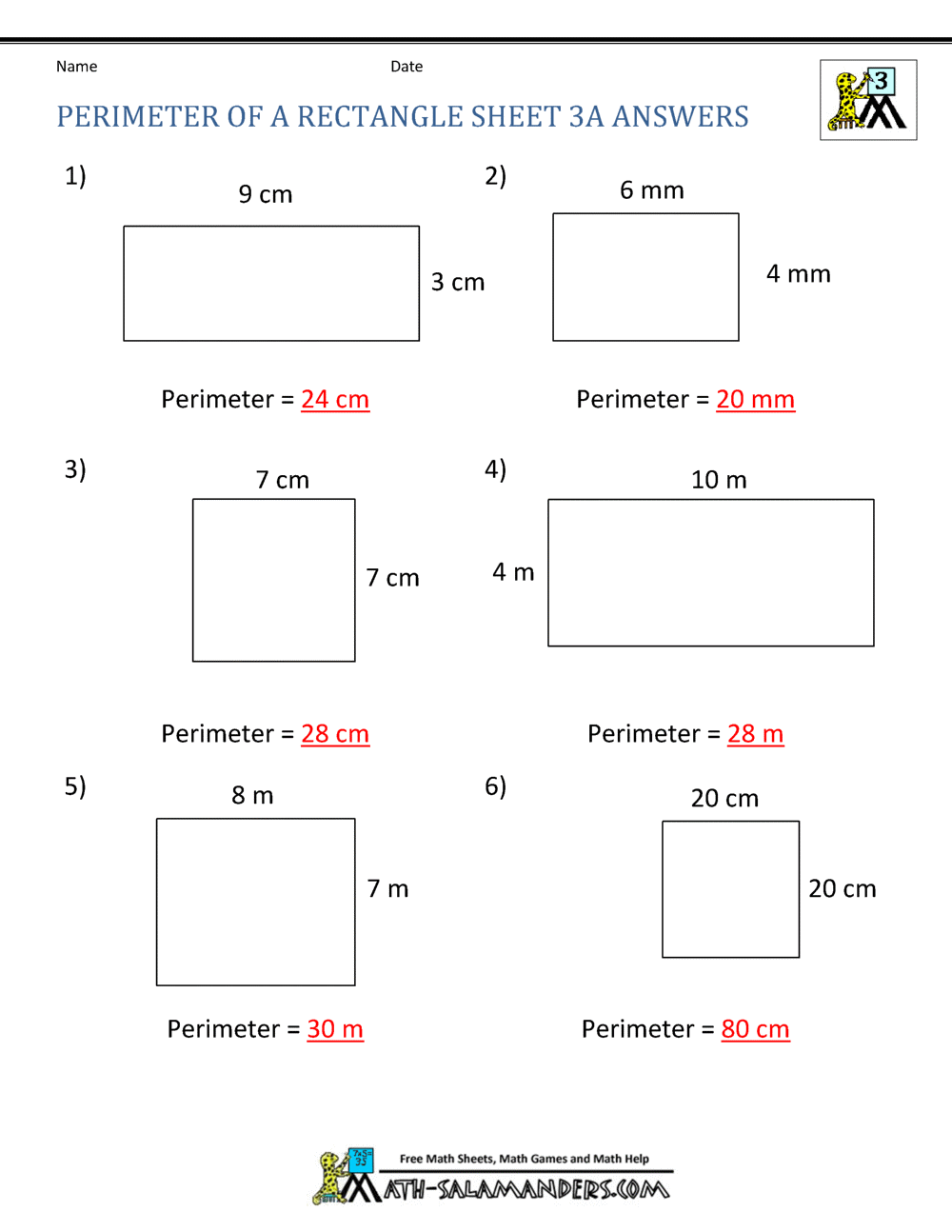Topic how do you find the perimeter of a polygon: Discover the fascinating journey of unraveling polygon perimeters, a cornerstone concept in geometry that unlocks the mysteries of shapes and sizes in the world around us.
Table of Content
- Definition of a Polygon and Perimeter
- YOUTUBE: Calculating the Perimeter of Polygons
- Basic Formulas for Calculating Polygon Perimeters
- Perimeter Calculation for Regular Polygons
- Perimeter Calculation for Irregular Polygons
- Importance of Trigonometry in Polygon Perimeter Calculations
- Advanced Techniques: Polygon Approximation Era and Archimedes
- Geometric Applications of Polygon Perimeters
- Extension of Perimeter Calculations to Non-Euclidean Geometries
- Practical Examples and Applications
- Software and Tools for Perimeter Calculation
- Common Mistakes and Misconceptions
Definition of a Polygon and Perimeter
A polygon is a two-dimensional geometric figure with straight sides that are fully closed. The sides intersect only at their endpoints and no line segments cross each other. Polygons can vary in the number of sides they have and include shapes like triangles, quadrilaterals, pentagons, hexagons, and more.
The perimeter of a polygon is the total length of its outer boundary. The method to calculate the perimeter depends on whether the polygon is regular (all sides and angles are equal) or irregular.
- Regular Polygons: The perimeter of a regular polygon is calculated by multiplying the number of sides (n) by the length of one side (s). This can be represented as: Perimeter = n × s.
- Irregular Polygons: For irregular polygons, the perimeter is calculated by adding the lengths of all its sides. In mathematical terms, if a polygon has sides of lengths a, b, c, etc., the perimeter is a + b + c + ...
Understanding the concept of perimeter is crucial in geometry, and it has practical applications in various fields including architecture, engineering, and graphics design.
Here are some examples to illustrate these concepts:
- Example 1: A regular hexagon with each side measuring 6 inches will have a perimeter of 36 inches (6 sides x 6 inches).
- Example 2: An irregular polygon with sides of 7, 9, 6, and 5 feet will have a perimeter of 27 feet (7+9+6+5 feet).
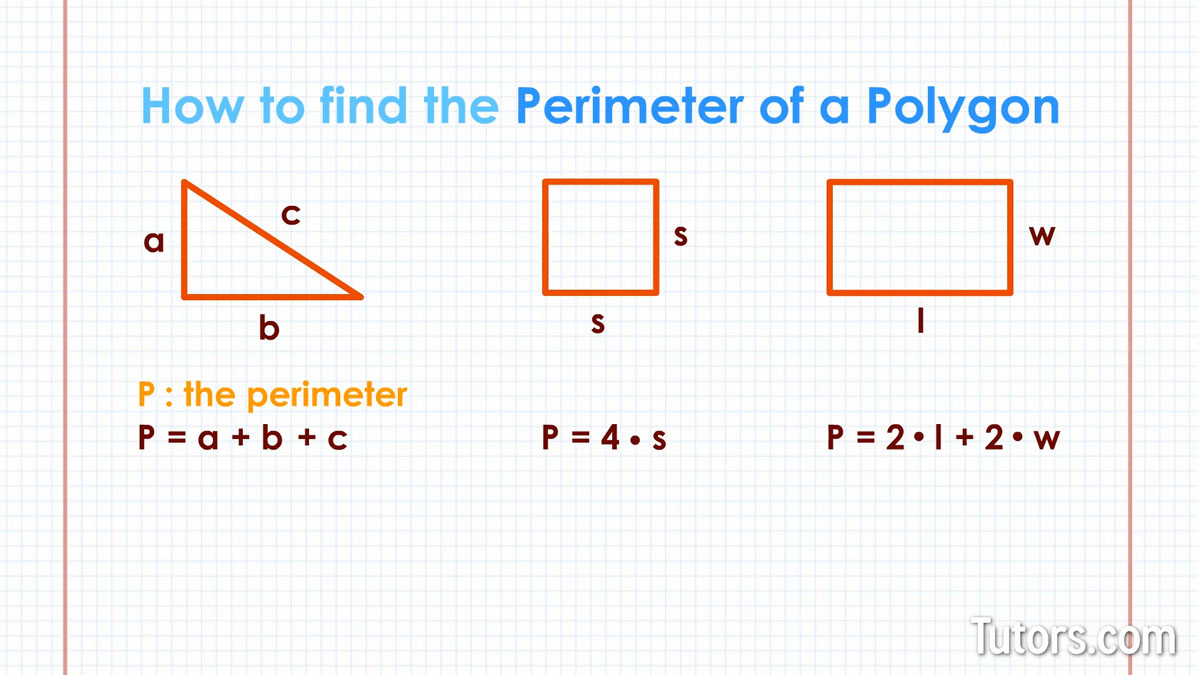
READ MORE:
Calculating the Perimeter of Polygons
\"Discover the fascinating world of perimeter in our educational video! Learn how to calculate the total length of a shape\'s boundary and explore real-life examples that will leave you amazed at the importance of this geometric concept.\"
Intro to Perimeter for Kids: How to Find the Perimeter of Polygons
\"Looking for an engaging introduction to a thrilling topic? Watch our captivating video intro! Prepare to embark on a journey through captivating visuals and thought-provoking explanations that will leave you excited to dive deeper into the subject.\"
Basic Formulas for Calculating Polygon Perimeters
The perimeter of a polygon is the sum of the lengths of its sides. Calculating this value varies depending on whether the polygon is regular (all sides and angles are equal) or irregular (sides and angles may vary).
Regular Polygons
For a regular polygon, the perimeter can be calculated using the formula:
- Perimeter of a regular polygon = number of sides (n) × length of one side (s)
Example: A regular hexagon with each side measuring 6 inches has a perimeter of 6 × 6 = 36 inches.
Irregular Polygons
For irregular polygons, the perimeter is the sum of the lengths of all sides. This requires measuring each side individually.
- Perimeter of an irregular polygon = Sum of the lengths of all sides
Example: A quadrilateral with sides of 7, 9, 6, and 5 feet has a perimeter of 7 + 9 + 6 + 5 = 27 feet.
Specific Polygons
Certain polygon types have specific formulas:
- Triangles: Sum of the lengths of all three sides.
- Squares: 4 times the length of one side.
- Rectangles: 2 times the sum of the length and width.
Example: A rectangle with length 14 inches and breadth 5 inches has a perimeter of 2 × (14 + 5) = 38 inches.
It\"s important to remember that the perimeter\"s unit will be the same as the unit used for the sides. Thus, a square with sides of 37 meters has a perimeter of 148 meters.

Perimeter of a Polygon
\"Uncover the hidden beauty of polygons in our visually stunning video. From triangles to hexagons, explore the mesmerizing patterns and symmetries found in these multifaceted shapes. Get ready to have your perception of geometry transformed!\"
Perimeter Calculation for Regular Polygons
Regular polygons have equal-length sides and angles. The formula for calculating their perimeter is simple: multiply the length of one side by the total number of sides.
Formula: Perimeter of a regular polygon = number of sides (n) × length of one side (s)
- Determine the length of one side of the polygon (s).
- Identify the number of sides in the polygon (n).
- Calculate the perimeter by multiplying the number of sides by the length of one side (P = n × s).
Examples:
- Square (4 sides): If one side is 5 meters, the perimeter is 4 × 5 = 20 meters.
- Equilateral Triangle (3 sides): For a side length of 6 meters, the perimeter is 3 × 6 = 18 meters.
- Regular Hexagon (6 sides): With each side measuring 3 meters, the perimeter is 6 × 3 = 18 meters.
This formula is applicable to all regular polygons, from triangles to polygons with many sides. The unit of the perimeter will be the same as the unit used for measuring the sides.

Perimeter Calculation for Irregular Polygons
For irregular polygons, where sides are not of equal length, calculating the perimeter involves summing up the lengths of all the individual sides.
Formula: Perimeter of an irregular polygon = Sum of the lengths of all sides
- Measure the length of each side of the polygon.
- Add together the lengths of all the sides.
Example: Consider a quadrilateral with sides measuring 12, 6, 8, and 9 units. The perimeter would be calculated as 12 + 6 + 8 + 9 = 35 units.
It\"s important to ensure that all side measurements are in the same unit for consistency in the final perimeter value.
This method applies to any irregular polygon, regardless of the number of sides. The key is to accurately measure each side and sum them up to find the total perimeter.
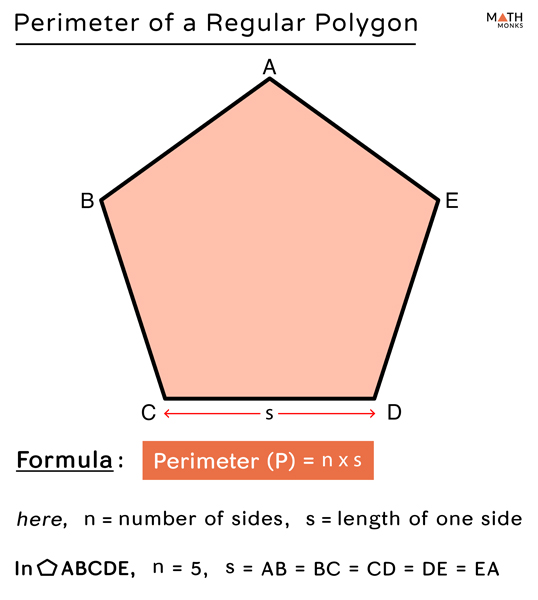
Importance of Trigonometry in Polygon Perimeter Calculations
Trigonometry plays a crucial role in calculating the perimeters of polygons, especially when dealing with irregular shapes or when specific side lengths are unknown. This is because trigonometry allows for the determination of unknown side lengths using angles and other known sides, which is essential in computing the perimeter of certain polygons.
In regular polygons, where all sides and angles are equal, the perimeter can be easily calculated by multiplying the length of one side by the number of sides. However, in irregular polygons, where sides and angles may vary, trigonometry becomes indispensable.
- Identifying Unknown Side Lengths: For irregular polygons, trigonometry can be used to find unknown side lengths. For example, in a right-angled triangle, one can use the Pythagorean theorem to determine the length of the unknown side, which is a crucial step in finding the perimeter.
- Calculating Perimeters in Non-Right Angled Triangles: In non-right angled triangles, trigonometric functions like sine, cosine, and tangent are used to find missing side lengths. These lengths are then summed up to find the perimeter.
- Application in Complex Polygons: In more complex polygons, such as pentagons or hexagons, trigonometry aids in dividing the shape into triangles and calculating individual side lengths. These lengths are then used to determine the total perimeter.
In conclusion, understanding and applying trigonometry is essential for accurately calculating the perimeters of various polygons, particularly when dealing with complex shapes or when certain dimensions are not directly measurable.
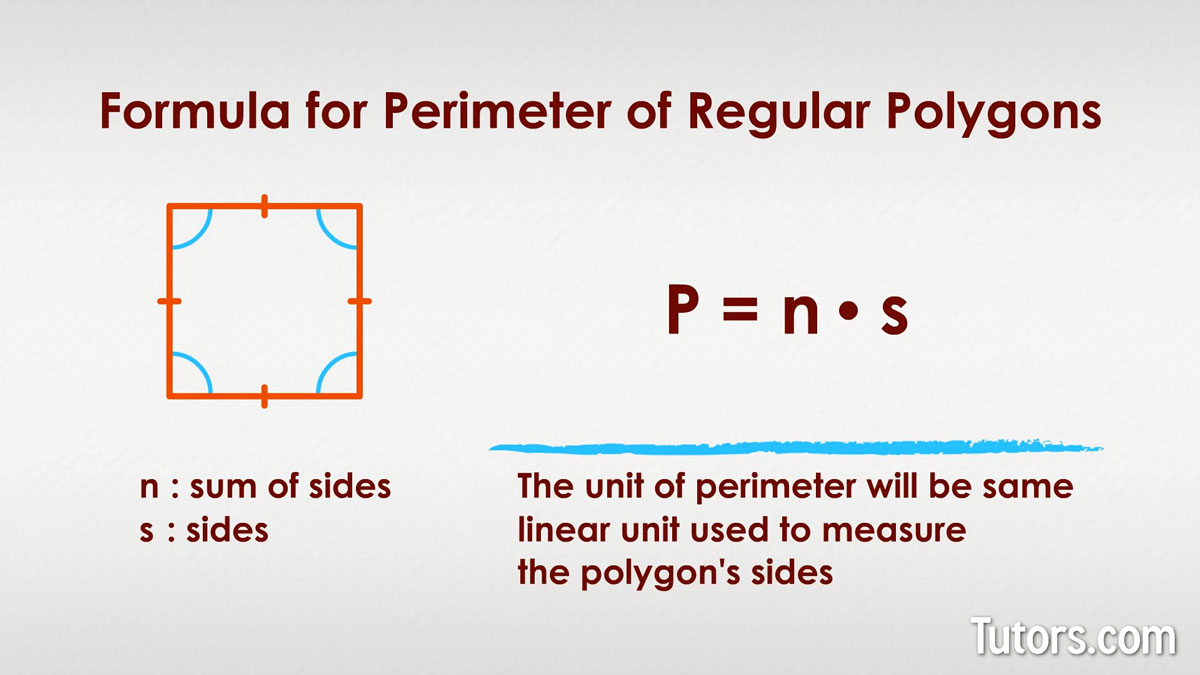
_HOOK_
Advanced Techniques: Polygon Approximation Era and Archimedes
The Polygon Approximation Era marks a significant period in mathematical history, especially in the context of Archimedes and his contributions. Archimedes, a Greek mathematician, physicist, engineer, inventor, and astronomer, made substantial contributions to the study and understanding of polygons, particularly in the field of perimeter calculations.
One of his notable achievements was the approximation of the value of pi (π) by inscribing and circumscribing polygons around a circle and calculating their perimeters. This method, known as the method of exhaustion, was a precursor to integral calculus and represented a significant advancement in geometric analysis.
- Inscribed and Circumscribed Polygons: Archimedes used polygons with an increasing number of sides to approximate the perimeter of a circle. By doing this, he was able to estimate the value of π with greater accuracy.
- Method of Exhaustion: This method involved drawing polygons inside and outside a circle, gradually increasing the number of sides, thus getting closer to the actual perimeter of the circle. The perimeters of these polygons provided upper and lower bounds for the circumference of the circle.
- Implications for Perimeter Calculations: Archimedes\" work laid the groundwork for later mathematical developments. His techniques allowed for more precise calculations of perimeters, not just for circles but for other complex shapes.
Archimedes\" approach to polygon approximation illustrates the deep interconnection between geometry and algebra, highlighting the importance of mathematical reasoning and proof. His methods continue to influence modern mathematics, emphasizing the significance of his work in the field of polygon perimeter calculations.

Geometric Applications of Polygon Perimeters
The perimeter of a polygon, which is the total length of its boundary, has numerous applications in various fields of geometry and real-world contexts. Understanding how to calculate and use polygon perimeters can be invaluable in solving both theoretical and practical problems.
- Architecture and Engineering: In architectural design and engineering, knowing the perimeter of polygons helps in estimating materials needed for construction. For instance, calculating the perimeter of floor plans is essential for determining the amount of baseboard or crown molding required.
- Land Surveying: Perimeter calculations are vital in land surveying to determine the boundary lengths of properties. This is crucial for legal and construction purposes.
- Mathematics and Education: In educational contexts, teaching perimeter calculations helps students understand the basics of geometry and prepares them for more complex mathematical concepts.
- Science and Research: In scientific research, especially in fields like biology and environmental science, understanding the perimeter of certain shapes can aid in habitat mapping and ecological studies.
- Art and Design: Artists and designers often use knowledge of polygon perimeters to create balanced and proportionally accurate works, whether in digital design, sculpture, or other mediums.
These applications demonstrate the practical importance of understanding and calculating the perimeters of polygons. From planning and construction to education and art, the ability to accurately determine the perimeter of various shapes is a valuable skill across multiple disciplines.

Extension of Perimeter Calculations to Non-Euclidean Geometries
Extending perimeter calculations to non-Euclidean geometries involves a significant shift in understanding, as these geometries do not conform to the standard Euclidean postulates. Unlike Euclidean geometry, where the sum of angles in a triangle is always 180 degrees, non-Euclidean geometries, like hyperbolic and spherical, display different properties.
- Hyperbolic Geometry: In hyperbolic geometry, the sum of the angles in a triangle is less than 180 degrees. The computation of perimeters in this geometry can be quite complex, as straight lines in hyperbolic space are not the shortest distance between two points. This impacts the formulas used for perimeter calculations.
- Spherical Geometry: Spherical geometry, found on curved surfaces like a sphere, also deviates from Euclidean principles. Here, the sum of the angles in a triangle is more than 180 degrees. Perimeter calculations must account for the curvature of the space, which changes the way distances and lines are measured.
- Applications: Non-Euclidean geometries are not just theoretical but have practical applications. For instance, in global positioning systems and astronomy, spherical geometry plays a critical role, influencing how distances and perimeters are calculated on curved surfaces like planets and stars.
Understanding these different geometrical spaces is crucial for advanced studies in geometry and is also essential in fields like physics, where the nature of space is not always flat, and the Euclidean principles do not always apply.

Practical Examples and Applications
The perimeter of a polygon, being the total distance around its boundary, has several practical applications in different fields. These applications not only help in understanding the concept better but also demonstrate its relevance in real-world scenarios.
- Architecture and Construction: In these fields, perimeter calculations are crucial for estimating the amount of materials needed. For example, knowing the perimeter of a floor plan helps determine the length of skirting boards or fencing required.
- Land Surveying: The perimeter of a piece of land is essential information for surveyors. It helps in land valuation, property delineation, and in legal contexts, especially in the case of irregularly shaped plots.
- Education: In educational settings, teaching the concept of perimeters helps students grasp basic geometric principles, which are foundational for more advanced studies in mathematics.
- Geometry and Mathematics: Perimeter calculations are fundamental in geometry, aiding in understanding shapes, spatial reasoning, and in solving complex mathematical problems.
- Everyday Life: Simple tasks, like determining the amount of paint needed to cover the boundaries of a room or measuring the border of a garden, involve calculating perimeters.
These examples underscore the significance of understanding how to calculate and apply the concept of perimeters in various practical and theoretical contexts.

Software and Tools for Perimeter Calculation
There are various software tools available that facilitate the calculation of polygon perimeters, making this task more accessible and interactive for both educational and professional purposes.
Desmos Geometry Tool
Desmos offers a dynamic and interactive geometry tool that can be used for a variety of measurements, including polygon perimeters. It allows for construction and transformation of geometric shapes, and provides dynamic measurements that adjust with changes in the shapes. This tool is particularly beneficial for educational purposes, as it helps students visualize and understand geometric relationships.
- Interactive workspace for measurement and construction
- Dynamic measurements for polygons
- Useful for understanding compass-and-straightedge constructions
- Features like reflections, translations, rotations, and dilations
GeoGebra Geometry
GeoGebra provides an interactive geometry tool that enables the creation of various geometric shapes such as triangles, circles, and polygons. It is particularly useful for visualizing geometric concepts and performing a variety of calculations, including perimeter measurements.
- Facilitates creation of diverse geometric shapes
- Interactive and user-friendly interface
- Suitable for both education and professional use
Omnicalculator Perimeter Calculators
Omnicalculator offers a range of calculators for different geometric shapes, including polygons. These calculators provide formulas and calculations for perimeters, making it a practical tool for quick and accurate measurements. The site offers specific formulas for various shapes like rectangles, triangles, circles, and more complex forms such as ellipses and trapezoids.
- Detailed formulas for various shapes
- User-friendly interface for quick calculations
- Helpful for both educational and professional contexts
Utilizing these tools can significantly enhance the understanding and application of geometric concepts, particularly the calculation of polygon perimeters. They offer a blend of practicality and interactivity, making geometry more accessible and engaging.

_HOOK_
READ MORE:
Common Mistakes and Misconceptions
Understanding the perimeter of polygons is crucial in geometry, but several common mistakes and misconceptions can lead to errors. Being aware of these pitfalls is essential for accurate calculations.
1. Confusing Perimeter with Area
One common mistake is confusing the perimeter (the total distance around a shape) with its area (the space inside the shape). Perimeter is measured in linear units, while area is in square units.
2. Mixing Units of Measurement
Using different units of measurement for the sides of a polygon can lead to incorrect perimeter calculations. It\"s important to convert all measurements to the same unit before calculating the perimeter.
3. Incorrect Calculations for Irregular Polygons
In irregular polygons, each side can have different lengths. A common error is not summing all the individual side lengths correctly or overlooking a side.
4. Misconceptions About Circles and Polygons
Some might mistakenly categorize a circle as a polygon. However, a polygon is a closed shape with straight lines, while a circle has a curved boundary and its perimeter is known as the circumference.
5. Misidentifying Polygon Types
Confusion between regular (all sides and angles are equal) and irregular polygons can result in using the wrong formula. For regular polygons, the perimeter can be found by multiplying the length of one side by the number of sides.
6. Overlooking the Role of Shape
The perimeter calculation varies with the shape of the polygon. For example, a square\"s perimeter is four times one of its sides, whereas an irregular polygon requires adding each distinct side length.
7. Misunderstanding the Properties of Special Polygons
Special types of polygons, like parallelograms or trapezoids, have unique properties that affect how their perimeter is calculated. Not considering these properties can lead to errors.
By avoiding these common mistakes and understanding the unique aspects of different polygons, accurate perimeter calculations can be achieved more consistently.
Mastering polygon perimeters enhances mathematical understanding and real-world problem-solving. Explore our comprehensive guide to uncover the secrets of accurately calculating polygon perimeters, a fundamental skill in geometry!




